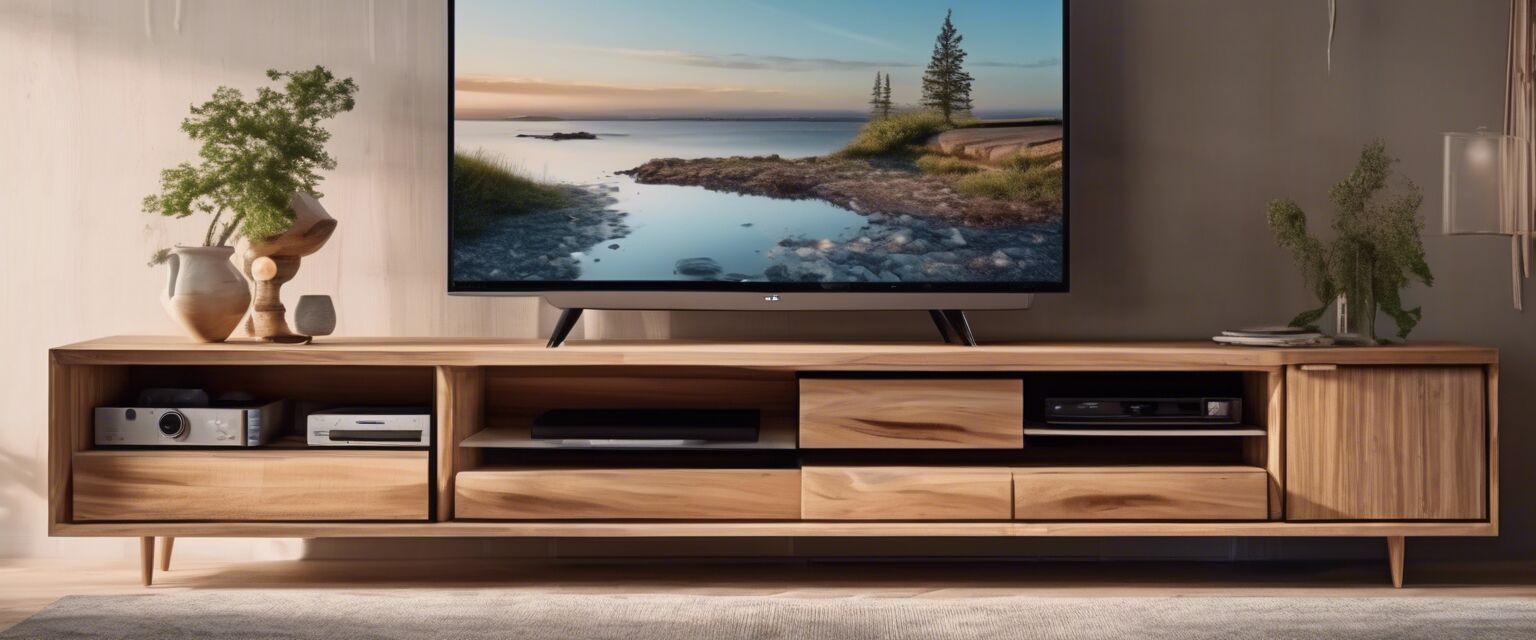
The Future of Sustainable Furniture: What to Expect
As the world shifts towards greater environmental consciousness, the furniture industry is also evolving. In this article, we will explore the trends shaping the future of sustainable furniture design, with a focus on how eco-friendly TV stands are set to evolve in the coming years.
Key Takeaways
- The demand for eco-friendly materials is growing.
- Design innovation is at the forefront of sustainable furniture.
- Consumer awareness plays a crucial role in sustainability.
- Modular and multifunctional designs are becoming popular.
- Recycling and upcycling practices are on the rise.
Understanding Sustainable Furniture
Sustainable furniture refers to pieces that are made from environmentally friendly materials, produced using processes that minimize harm to the planet. This movement aims to reduce waste, lower carbon footprints, and promote the use of renewable resources.
What is Eco-Friendly Furniture?
Eco-friendly furniture incorporates sustainable practices in both production and design. Key characteristics include:
- Use of reclaimed or recycled materials.
- Low-emission manufacturing processes.
- Durability and longevity to reduce waste.
- Non-toxic finishes and adhesives.
Current Trends in Sustainable Furniture Design
With the increasing importance of sustainability, several trends have emerged within the furniture industry. Here are a few noteworthy trends that are shaping the future:
| Trend | Description |
|---|---|
| Modular Design | Modular furniture allows for flexibility and adaptability in use, making it easier for consumers to reconfigure their spaces. |
| Biodegradable Materials | A move towards materials that can naturally decompose without harming the environment, such as bamboo and cork. |
| Smart Furniture | The integration of technology in furniture pieces, offering functionalities that enhance eco-living. |
| Minimalism | A focus on simplicity in design leads to reduced consumption and waste. |
| Upcyling | Creative reuse of old furniture to create new designs, minimizing waste. |
The Role of Consumer Awareness
Consumer awareness and preferences play a significant role in the demand for sustainable options. As customers become more educated about the impact of their choices, they are increasingly seeking out furniture that aligns with their values. Awareness initiatives and educational campaigns contribute to this shift.
Why Choose Eco-Friendly TV Stands?
When it comes to selecting furniture, especially TV stands, opting for eco-friendly options holds numerous advantages:
- Support for sustainable practices.
- Durability that leads to less frequent replacements.
- Reduction in toxic chemicals in your home.
- Aesthetic appeal through unique and natural designs.
What to Expect in the Coming Years
Looking forward, there are several key developments we can anticipate in the realm of sustainable furniture, particularly with TV stands:
Innovative Material Use
We expect to see an increased use of materials such as:
- Recycled plastics
- Sustainable woods
- Hemp-based composites
Enhanced Customization
Future designs will likely offer personalization options, allowing customers to choose finishes, colors, and configurations that suit their taste and needs.
Conclusion: A Greener Future Awaits
The future of sustainable furniture is promising, and eco-friendly TV stands are at the forefront of this movement. By prioritizing sustainability, we not only enhance our living spaces but also contribute to the well-being of our planet. To learn more about selecting sustainable furniture, visit our buying guides that help you navigate your eco-friendly choices.
Pros
- Better for the environment.
- Unique aesthetic appeal.
- Long-lasting durability.
- Promotes recycling and upcycling.
Cons
- Can be more expensive upfront.
- Availability may be limited.
- Need for proper maintenance for longevity.
As we navigate towards a more sustainable future, remember to stay informed and make eco-conscious decisions that can lead to a more sustainable lifestyle.
Explore More
Curious about different types of sustainable furniture? Check out our selections on corner TV stands or wooden TV stands to enhance your living space sustainably.